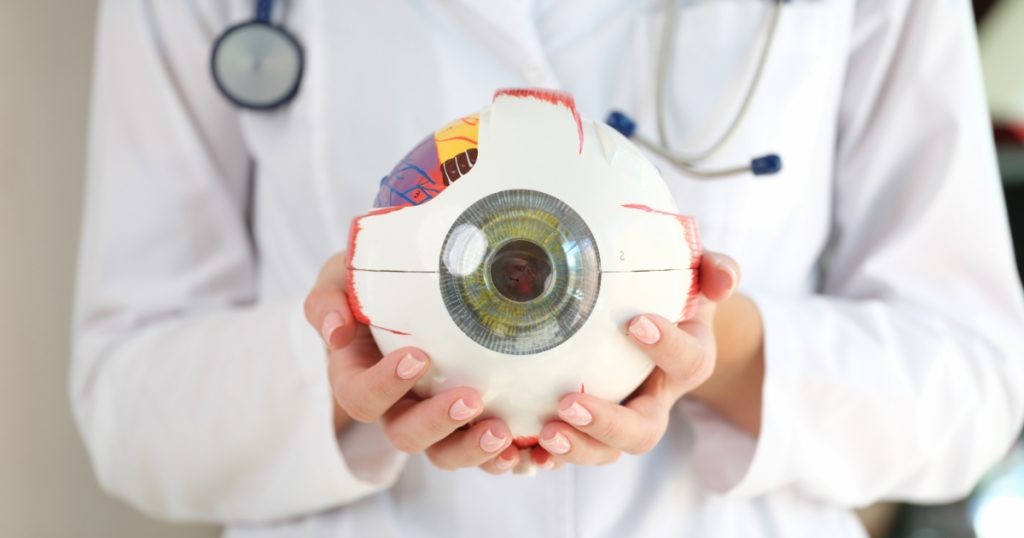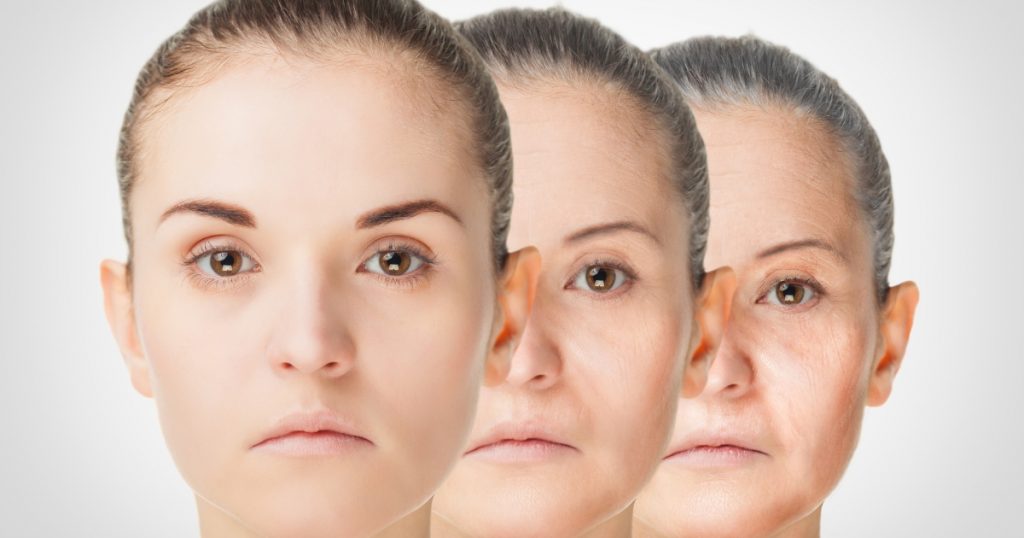Botox treatments have skyrocketed in popularity for their cosmetic and therapeutic benefits. However, like any procedure, it comes with potential side effects. One of the most distressing yet commonly discussed is the Botox Eyelid Droop. This guide will delve deep into its causes, how to prevent it, and ways to manage it if it occurs.
Anatomy of the Eye and Surrounding Muscles

The eye region is complex, consisting of numerous muscles that control blinking, squinting, and facial expressions. Understanding these muscles is crucial for any procedure involving the eye. Injecting the Botox procedure into the wrong muscle can lead to unwanted side effects.
- Orbicularis Oculi: This muscle encircles the eye and is responsible for eyelid closure.
- Levator Palpebrae Superioris: This muscle helps lift the upper eyelid.
- Complexity: Due to the intricate nature of eye muscles, precise knowledge is crucial for treatments.
Botox Injection Technique: The Importance of Precision
The success of a Botox treatment depends heavily on the Botox technique employed during the injection. Precision ensures that the toxin affects only the desired muscles, minimising potential side effects. A skilled practitioner’s hands can make all the difference.
Book A Consultation With Dr Shehzadi Tasneem
Top-rated Plastic Surgeon For Botox in Dubai
Installment Plan Available
Botox Injection Technique to Prevent Droopy Eyelid:
- Patient Evaluation:
- Analyse facial anatomy.
- Check for asymmetry or pre-existing eyelid conditions.
- Marking:
- With the patient’s eyes open and relaxed, mark the areas for injection.
- Stay at least 1 cm above the brow to avoid the risk of toxin migration, which can cause ptosis.
- Dosage:
- Use the minimal effective dose.
- Dosage can be adjusted depending on the individual’s response.
- Needle Technique:
- Use a fine needle (e.g., 30 or 32 gauge) to ensure precision.
- Insert the needle bevel-up and at a 45-degree angle.
- Injection Sites:
- Avoid injecting too close to the levator palpebrae superioris, the muscle that elevates the eyelid.
- For forehead lines, avoid injecting too low.
- Post-Injection Guidance:
- Advise patients to avoid rubbing or massaging the treated area for at least 4 hours.
- Advise patients to remain upright for 3-4 hours after treatment.
- Ask patients to contract the treated muscles (frown, raise eyebrows, etc.) for a few hours post-injection. This can help Botox bind to the nerve endings.
- MonitorMonitor for Side Effects:
- If a patient reports a droopy eyelid post-injection, evaluating and possibly referring to an ophthalmologist is crucial.
- Eyedrops like apraclonidine can be prescribed to temporarily alleviate the droop by elevating the upper eyelid. This treats the symptom but not the underlying cause.
- Maintain Records:
- Keep detailed records of injection sites, dosage, and any reported side effects to adjust technique in future sessions.
- Follow-up:
- Schedule a follow-up appointment 2 weeks post-injection to assess results and address concerns.
See related: botox eyebrow lifting
Incorrect Placement of Botox
One of the leading causes of Botox eyelid droop is the wrong injection placement. This misplacement can inadvertently paralyse the muscles responsible for lifting the eyelid. Choosing a reputable practitioner can minimise this risk.
| Area of Injection | Incorrect Placement | Possible Outcome | Muscles Potentially Affected |
| Forehead (frontalis muscle) | Too low or too deep | Eyebrow or eyelid droop | Frontalis and levator palpebrae superioris |
| Glabellar region (between the brows) | Too high or too deep | Eyelid droop | Levator palpebrae superioris |
| Outer eyes (crow’s feet) | Too close to the eye | Eyelid droop | Orbicularis oculi and potentially levator palpebrae superioris |
| Brow lift | Incorrect point of injection | Asymmetrical brow lift or eyelid droop | Frontalis and orbicularis oculi |
Excessive Dosage: Overestimating the Required Units

Administering too much Botox can lead to an over-relaxed muscle, causing the eyelid to droop. It’s crucial to determine the correct dose for each individual. A conservative approach is often best, especially for first-time users.
| Area of Treatment | Typical Botox Units (per side) | Notes |
| Glabellar lines (frown lines between the brows) | 10-25 units | Can vary based on muscle mass and desired effect. Over-treatment or misplacement can affect the levator palpebrae superioris, leading to eyelid droop. |
| Forehead lines | 5-15 units | Caution: Too much can cause brow heaviness or drooping. |
| Crow’s feet (outer eyes) | 5-15 units | Always assess the individual’s anatomy, as the muscles here can impact the position of the brow and eyelid. |
Individual Variations in Muscle Anatomy
Everyone’s facial anatomy is unique. While standard injection points exist, individual variations can mean these are only sometimes ideal. Personalised treatment plans often yield the best results.
- Muscle Strength: Some individuals have stronger muscles that may require adjusted dosages.
- Injection Points: Standard points might only sometimes be suitable for some.
- Consultation Importance: An initial consultation can help identify unique anatomical features.
Migration of Botox from the Injection Site
Botox can sometimes spread from the initial injection site to surrounding muscles. This migration can cause unintended effects, including eyelid drooping. It’s crucial to avoid rubbing the treated area to minimise this risk.
- Post-treatment Care: Patients should be cautious in the first few hours post-injection.
- Time Frame: Migration risks are highest for 2-4 hours following treatment.
- Instructions: Practitioners often provide specific guidelines to prevent Botox migration.
Previous Surgeries and Their Impact on Botox Effectiveness
Past surgical procedures, especially those around the eyes, can alter the muscle and skin’s anatomy. This change can affect how Botox is absorbed and its subsequent effect. It’s essential to provide a detailed medical history to the practitioner.
- Altered Anatomy: Surgeries can change standard injection points and dosages.
- Scar Tissue: This can influence Botox dispersion and effectiveness.
- Medical History: Always disclose prior surgeries to ensure optimal results.
Age-Related Skin and Muscle Laxity

As individuals age, the skin loses elasticity, and muscles can weaken. This natural ageing process can influence the outcome of Botox injections. More mature skin might exhibit different results than younger skin.
- Skin Elasticity: Reduced elasticity can influence how Botox takes effect.
- Muscle Strength: Ageing muscles might respond differently to Botox.
- Tailored Approach: Elderly patients might need a different treatment approach.
Delayed Onset of Ptosis After Injection
While Botox effects are usually seen within days, the drooping of the eyelid can sometimes manifest weeks later. This delay can be unsettling for patients. Being aware of this possibility can help manage expectations.
- Monitoring: Regularly monitoring the treated area can help detect delayed reactions.
- Cause Identification: It’s crucial to determine the cause to address it appropriately.
- Patient Education: Informing patients about potential delayed reactions is crucial.
Pre-existing Neurological or Muscular Conditions
Certain conditions, like myasthenia gravis, can increase the risk of eyelid droop after Botox. Such conditions can affect muscle responses to the toxin. Disclosing any pre-existing conditions is vital for safe treatment.
- Myasthenia Gravis: This condition affects nerve-muscle communication and can impact Botox outcomes.
- Full Disclosure: Always share your medical history with the practitioner.
- Safety First: Some conditions might contraindicate Botox treatment.
Prevention and Management of Botox Eyelid Droop
Preventing eyelid droop starts with choosing an experienced practitioner and clear communication. If droop does occur, several interventions can help manage and potentially reverse the effects. Staying informed and proactive is crucial.
| Prevention/Management | Recommendations |
| Choosing a Practitioner | Prioritise experience and skill |
| Communication | Express desired outcomes clearly |
| Post-Droop Options | Eye drops or treatments for Botox-induced droop |
The world of Botox offers remarkable results. Yet, being well-informed about potential complications like Botox Eyelid Droop is essential. Armed with knowledge, prospective Botox users can navigate their treatment journey more confidently, mitigating risks and optimising results. Always prioritise safety and open communication with your practitioner to achieve the best outcomes.
Book a free consultation with Dr Shehzadi Tasneem Sultan, an eminent plastic surgeon with a rich educational foundation from the Allama Iqbal Medical College and prestigious fellowships from London, UK.
With her deep expertise in procedures like Botox, facial rejuvenation, and body contouring and a history of working in top-tier institutions such as the Rashid Hospital in Dubai and St Thomas and Guys Hospital in London, she’s the trusted expert you’ve been seeking.
FAQs on Botox Eyelid Droop
After receiving fillers and Botox, it is important to avoid bathing or swimming for at least 24 hours to allow the treatments to fully settle in. After undergoing microblading, she decided to try Botox to enhance her overall youthful appearance. The Botox Surgeon skillfully performed non-invasive cosmetic procedures, leaving the clients with rejuvenated and youthful appearances. Yes, you can wear makeup after receiving Botox, as long as you wait at least 4 to 6 hours after the procedure to let the injections fully settle. After two months of regular Botox treatments, noticeable improvements in wrinkle reduction and overall skin appearance were observed. Underarm Botox is a popular solution for excessive sweating.
The lifespan of Botox effects typically lasts around three to four months.












